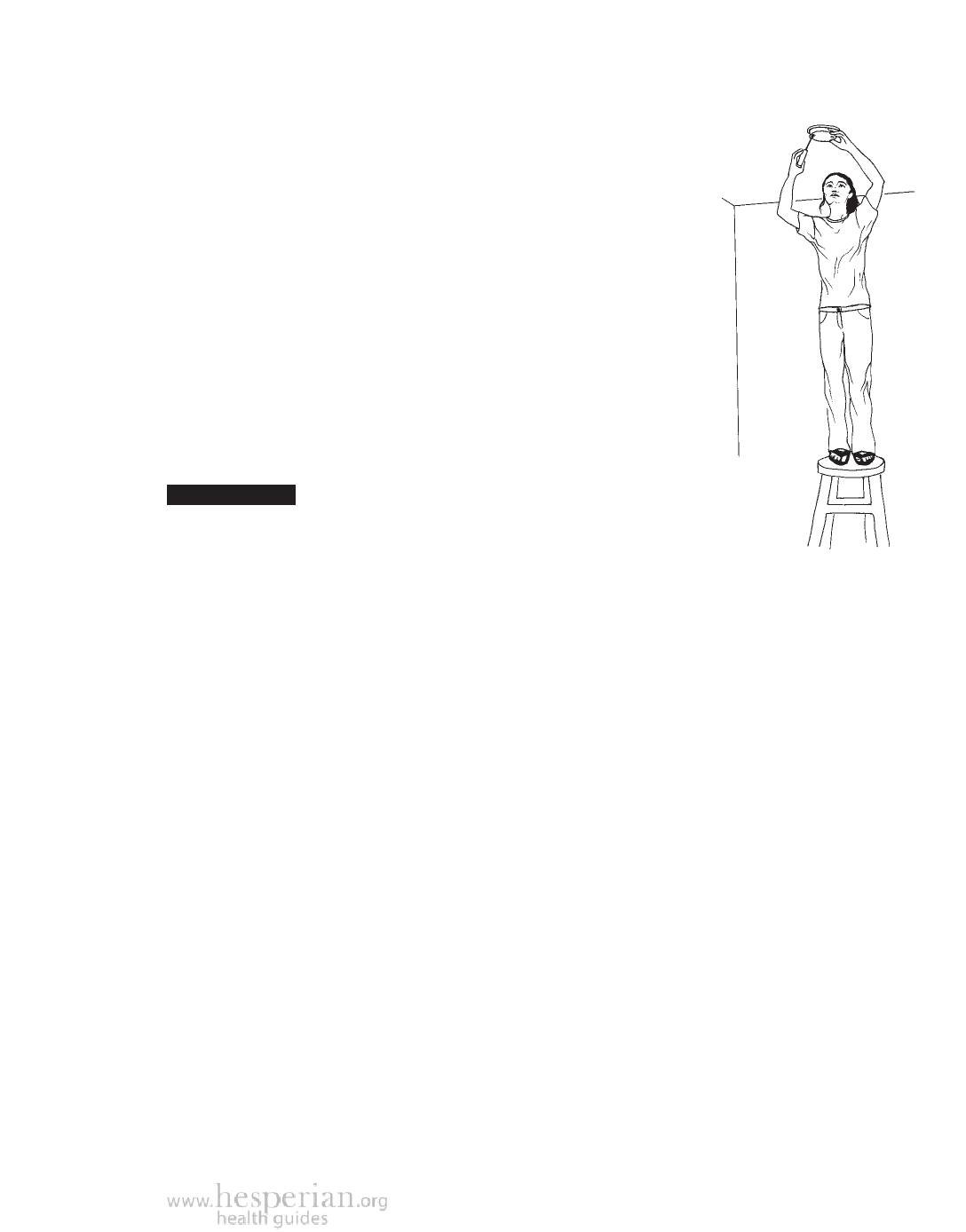
Fire Safety 365
Fire Safety
An important part of a healthy home is
preventing fires.
• Keep cooking fires enclosed.
• Keep fires away from children, and keep children away
from fires.
• Keep flammable and toxic materials (such as gasoline,
paint, paint thinner, solvents and kerosene) out of the
house and in well-sealed containers. If such materials are
in the house, keep them far from any heat source.
• Make sure electrical connections are safe.
• Keep a covered water bucket, a bucket of sand or dirt, or
a fire extinguisher near the stove.
important: DO NOT put water on a fire caused by cooking
grease. This will make the fire spread! Grease fires are put out by
stopping them from getting air. To put the fire out, cover it with a
blanket or heavy cloth, or throw sand or dirt on the grease.
Electricity
Smoke alarms warn if a
fire has started, and are
available at low cost in
some countries.
Even a small amount of electricity makes a big improvement in people’s lives,
for cooking, light, refrigeration, and so on. But unsafe electric wires can cause
electric shocks and fires. To prevent harm:
• Make sure electric lines are properly installed and grounded.
• Never run electric wires under carpets.
• Avoid connecting many electric extension cords together to form one
long cord. If they are not designed to be connected, they can cause fires.
• Do not install outlets or switches where they can get wet from water
pipes, taps, or sinks.
Electric transmission wires
High-voltage electrical cables give off large amounts of electric radiation that
can cause headaches, stress, irritation, and may lead to more serious health
problems such as cancer of the blood (leukemia). Just as light from a candle
becomes dimmer as our eyes get farther away from it, the harm from electricity
grows weaker with distance. To reduce the danger:
• Build houses 50 to 70 meters away from high-voltage power lines.
• Utility companies should not build power lines or cellular telephone towers
near schools or hospitals.
• Power lines should be buried when possible, rather than run above ground.
A Community Guide to Environmental Health 2012